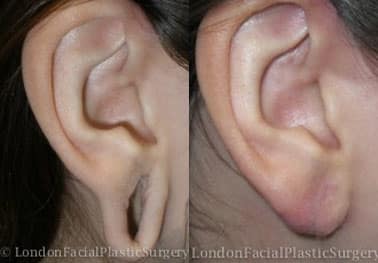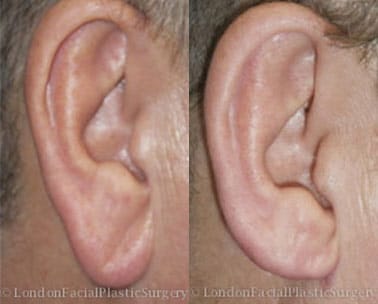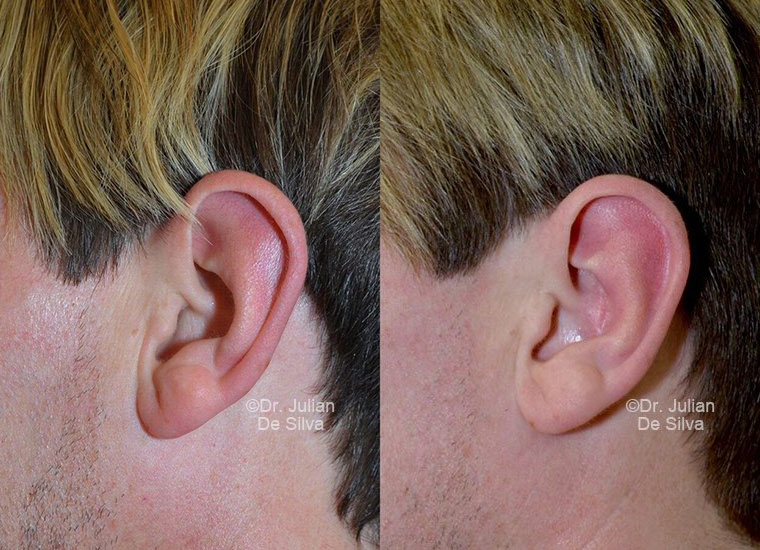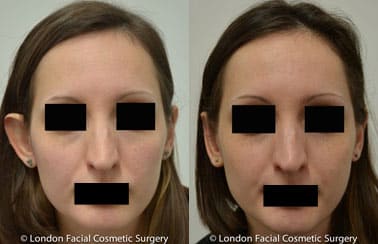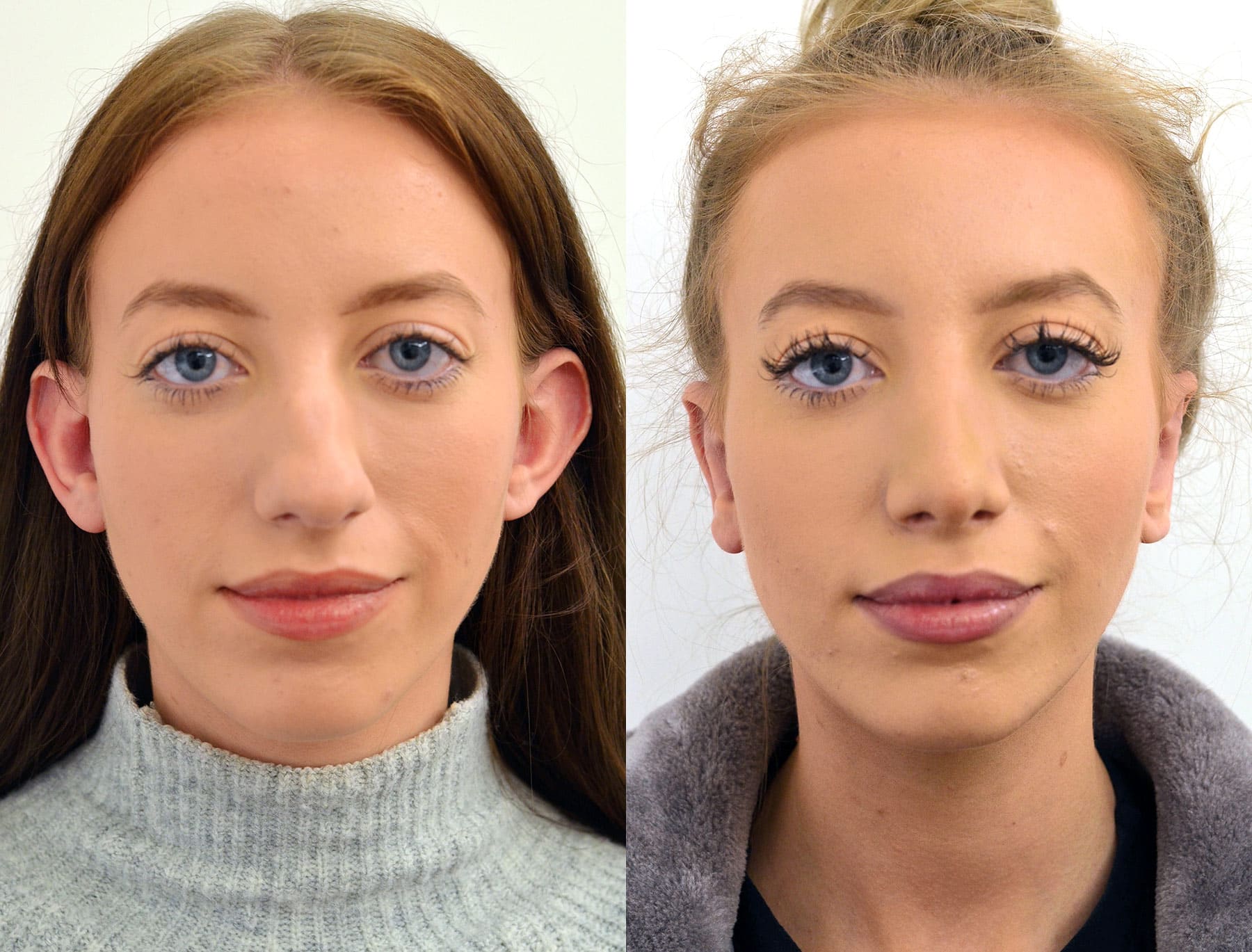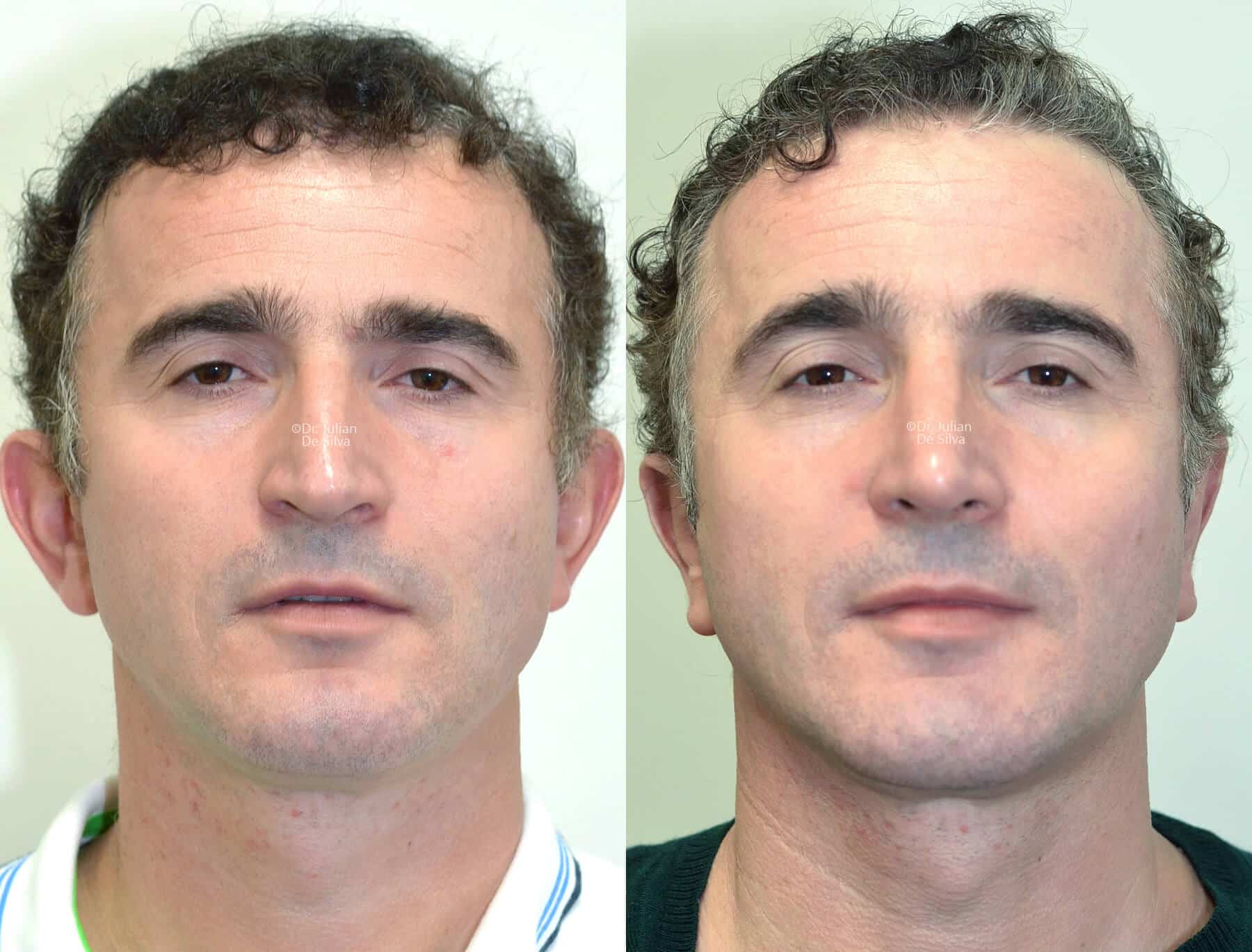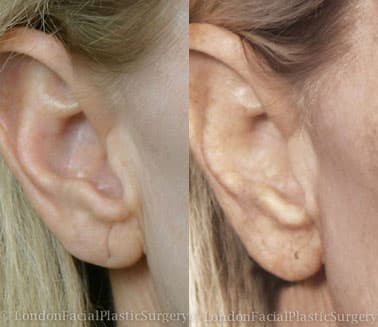Ear Cosmetic Surgery
in Harley Street, London
Ear pinning (otoplasty) is a cosmetic surgery used to reposition the ears closer to the patient’s head, resulting in a more natural-looking appearance. The procedure is regarded as cosmetic surgery as it does not affect the function of the ears and can be done in combination with other procedures.
FACELIFT SURGERY IN HARLEY STREET
Reducing prominent ears
(Ear pinning aka Otoplasty)
Ear pinning (otoplasty) is a cosmetic surgery used to reposition the ears closer to the patient’s head, resulting in a more natural-looking appearance. The procedure is regarded as cosmetic surgery as it does not affect the function of the ears and can be done in combination with other procedures.
Prominent ears that stick out can be seen by looking at a person face-on. In children, they can be the source of ridicule, but surgery can be performed once the ears are fully grown, at around 5-years old.
There is artistry in the surgery to ensure that the pinning of the ears is effective and do not return to their original position. Over-pinning of the ears should be avoided as this looks unnatural.
Surgery consists of making an incision in the natural fold in the back of the ear. A strip of skin and cartilage is removed to allow for an improved shape and contouring of the ear, followed by placing anchoring sutures that will stabilise the ear cartilage to give a long-term result.
Dressings are placed for several days, then headbands are used for two weeks in the afternoons to continue light pressure during the healing process. The ears may be uncomfortable for a week, particularly when sleeping on the side. The scar is hidden in the crease behind the ear.
Why Choose Dr De Silva in Harley Street, London ?
Dr De Silva is a widely credited and celebrated facial plastic surgeon who specialises in the eyes, nose, face and neck areas only, and is known for natural results.
“My focus has and always will be to be the very best at what I do, to continually innovate to provide World Class leadership to all my team, all my patients and all my associates. My mission is to help every patient be the very best version of themself with World-Class services, life-long follow up with complimentary facial aesthetic procedures.”
In a world of increasing complexity and misinformation, his passion has been focused on providing sincere advice, low risk and fast recovery procedures.
Otoplasty & Ear Pinning Before & After Results

Facelift & Facial Only Treatments
By focusing entirely on only facelift & facial cosmetic surgery procedures, Dr De Silva is able to provide the expertise that can only come with specialisation: facelift and neck lift, blepharoplasty, rhinoplasty and chin implants.
Natural Looking Results
Dr De Silva is a believer in the importance of artistry behind cosmetic results and focuses his skills at delivering natural looking results.
Fast Recovery
Dr De Silva has pioneered the advances in technology to speed up recovery with a combination regenerative medicine techniques, Oxygen and LED Therapy.
World Class Expertise
Dr De Silva also teaches other surgeons internationally and has contributed to the development of advanced surgical techniques, laser technology and stitch-less tissue adhesives.
Contact Details
Call: 020 8748 2860
Email: info@drjuliandesilva.co.uk
Address:
23 Harley Street
London, W1G 9QN, UK
Dr Julian De Silva
5 stars based on 458 reviews

Renowned expert in Facelift/Facial Cosmetic and Plastic Surgery. Signature techniques in Blepharoplasty, Rhinoplasty and Facelift surgery. Expert in revision surgery and in natural looking results


